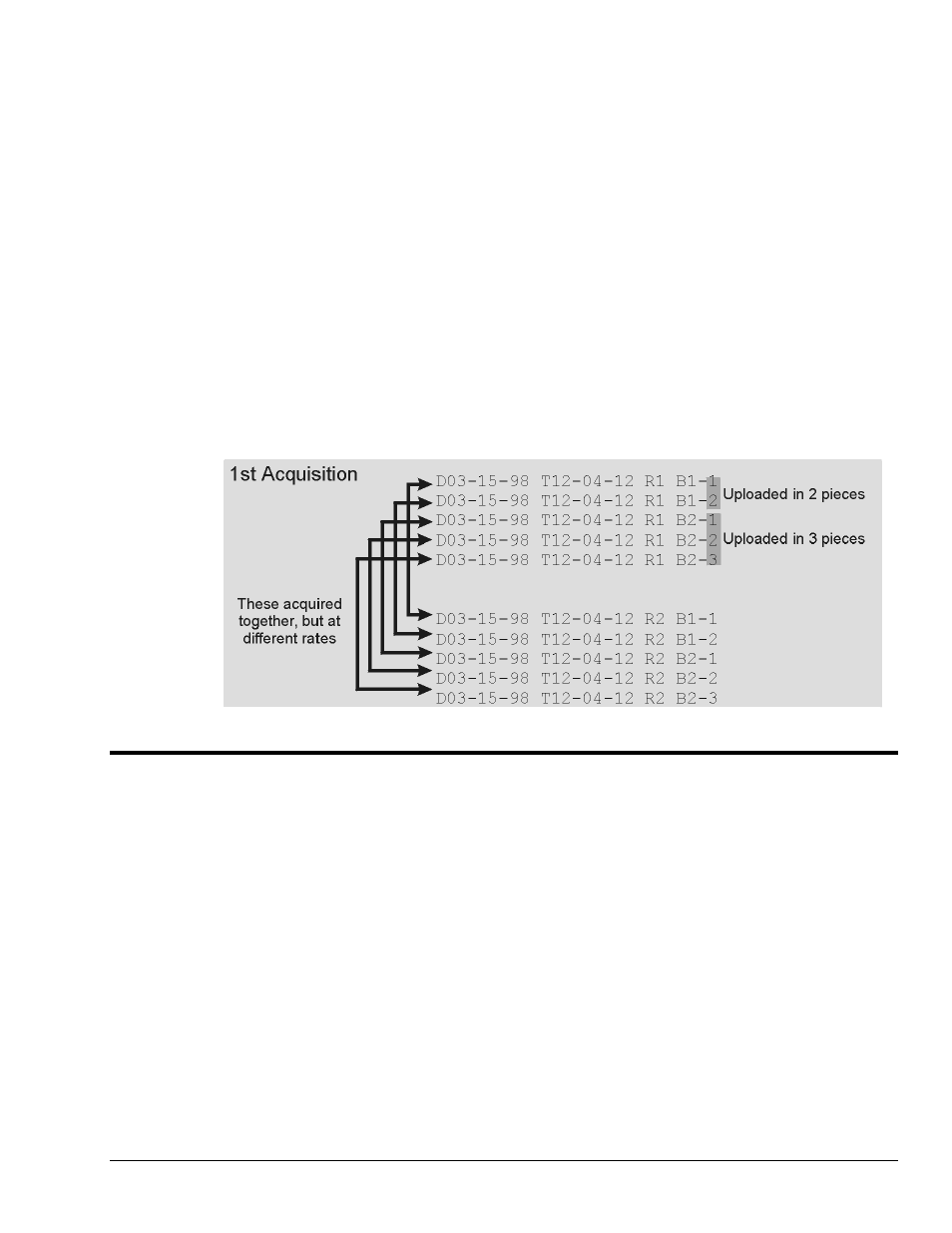Procedures – Measurement Computing LogBook Series User Manual
Page 137

Software Reference
989592
LogView LV-11
Example of all parameters: LAB1 #123456 D03-15-98 T12-04-12 R1 B1-1
SEED (user description string) = “LAB1”
LogBook serial number = 123456
Date armed = March 15, 1998
Time armed = 12:04:12PM
Rate = 1
Trigger block = 1, Segment = 1
Simplest application. If a new acquisition is uploaded, this file will be overwritten: R1 B1-1
Rate = 1
Trigger block = 1, Segment = 1
If all acquisitions are performed in the same day, the time can identify the files: T12-04-12 R1 B1-1
Time = 12:04:12pm
Rate = 1
Trigger block = 1, Segment = 1
The example below shows data files from an acquisition with 2 trigger blocks and 2 timebases; the
acquisition was uploaded in segments. All the dates and times are the same because these trigger blocks
are all part of the same acquisition. The first two files represent a continuous data collection—2 files exist
because of partial uploads.
Example of Data Uploaded in Segments
Procedures
Because of LogView’s flexibility, this manual can not detail every possible use of the system. Instead,
these procedures explain how to perform typical tasks. Understanding these tasks will help you apply the
principles to a variety of data acquisition environments. For your particular application, you may need
to combine or alter these procedures. For more details, you may need to refer to related Menu Descriptions
or procedures.
This section begins with a flowchart of a simple acquisition and then explains the following tasks and
operational modes:
Using an Attached LogBook……page LV- 12
Using LogBook “Unattached”……page LV- 14
Simple Data Logging……page LV- 14
Setting Up DBK Cards……page LV- 16
Using Multiple Timebases……page LV- 17
Using Digital 2-Point Calibration……page LV- 18
Using Digital Outputs As Alarms…page LV- 21
Using Exception Capturing……page LV- 23